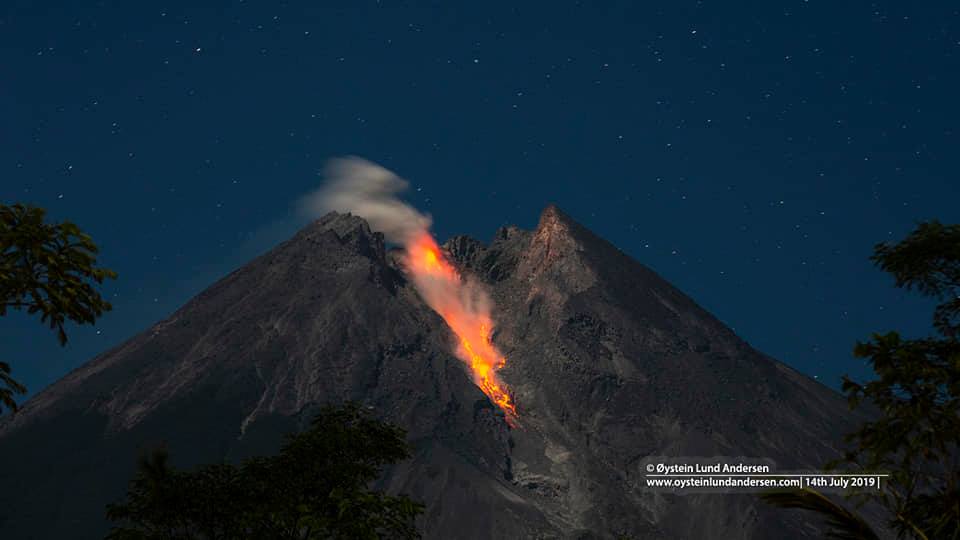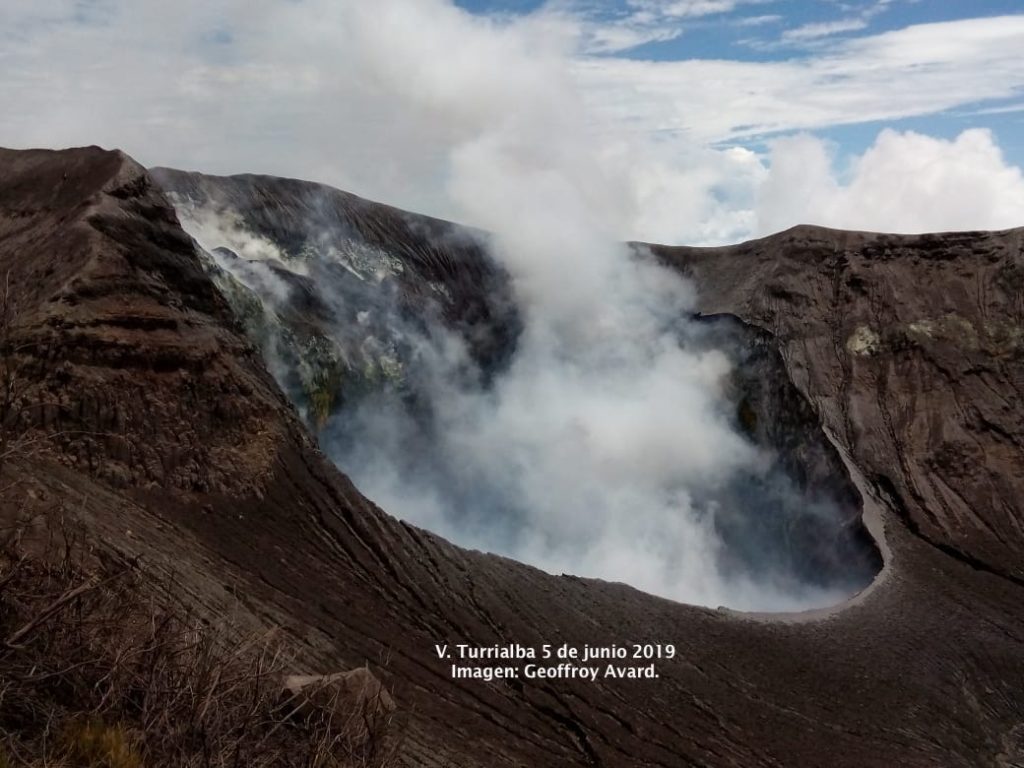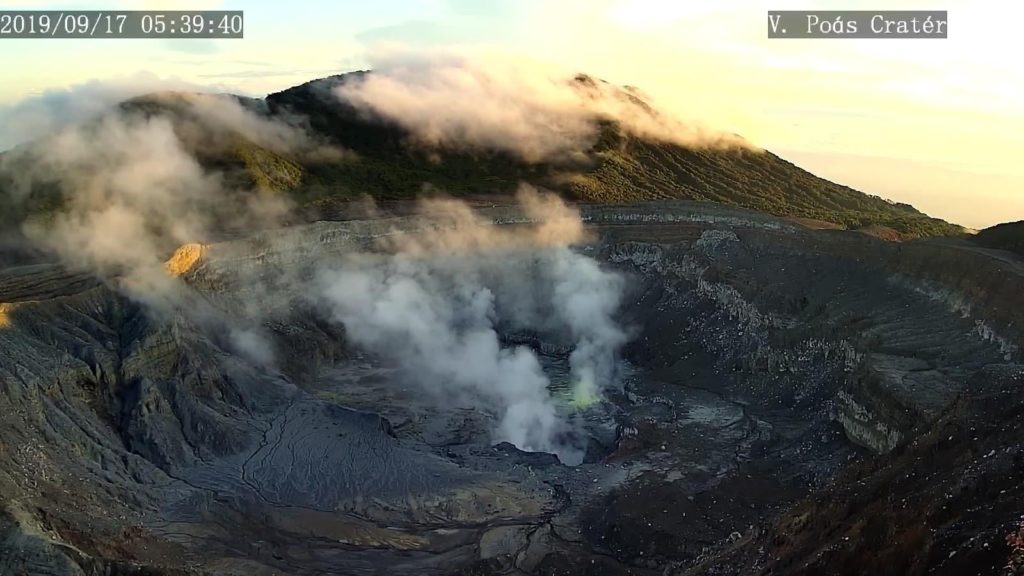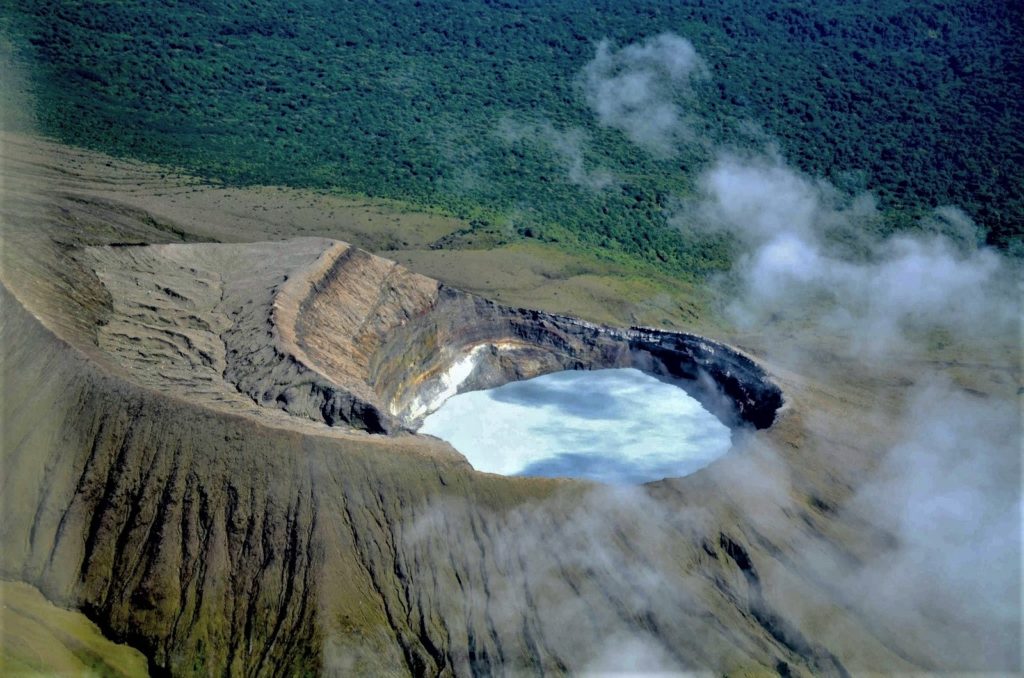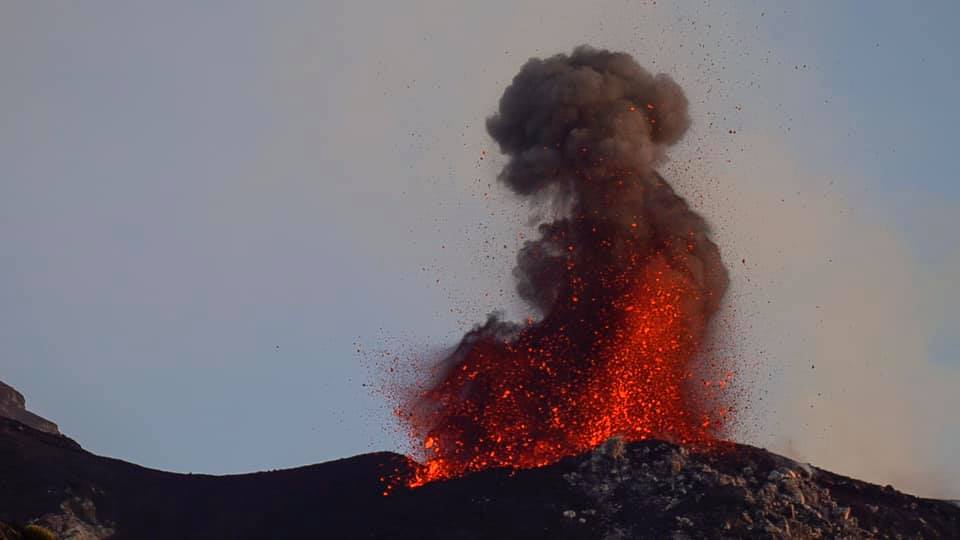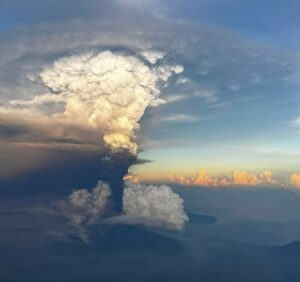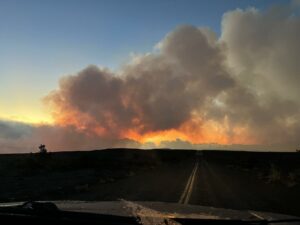September 29 , 2019.
Kamchatka , Sheveluch :
VOLCANO OBSERVATORY NOTICE FOR AVIATION (VONA).
Issued: September 29 ,2019 .
Volcano: Sheveluch (CAVW #300270)
Current aviation colour code: ORANGE
Previous aviation colour code: orange
Source: KVERT
Notice Number: 2019-144
Volcano Location: N 56 deg 38 min E 161 deg 18 min
Area: Kamchatka, Russia
Summit Elevation: 10768.24 ft (3283 m), the dome elevation ~8200 ft (2500 m)
Volcanic Activity Summary:
A growth of the lava dome continues, a fumarolic activity sometimes with some amount of ash, and an incandescence of the dome blocks and hot avalanches accompanies this process. Video and satellite data by KVERT showed an emission of some amount of ash from the volcano continues.
Explosive-extrusive eruption of the volcano continues. Ash explosions up to 32,800-49,200 ft (10-15 km) a.s.l. could occur at any time. Ongoing activity could affect international and low-flying aircraft.
Volcanic cloud height:
11480-13120 ft (3500-4000 m) AMSL Time and method of ash plume/cloud height determination: 20190929/0400Z – Video data
Other volcanic cloud information:
Distance of ash plume/cloud of the volcano: 62 mi (100 km)
Direction of drift of ash plume/cloud of the volcano: SE / azimuth 125 deg
Time and method of ash plume/cloud determination: 20190929/0029Z – JPSS-1 (14m15)
Source : Kvert.
Photo : Yu. Demyanchuk / Volkstat ru.
Indonesia , Merapi :
ACTIVITY REPORT OF MERAPI, 20-26 September 2019.
RESULTS OF OBSERVATION
visual:
The weather around Mount Merapi is usually sunny in the morning and evening while the afternoons and nights are foggy. There is a white smoke, thin to thick with low pressure. The maximum smoke height of 75 m was observed from the observation post of Mount Merapi Jrakah on 22 September 2019 at 06:40 WIB.
The morphological analysis of the crater area based on photographs of the Southeast sector revealed no significant morphological changes. The volume of the lava dome based on aerial photo analysis with drones on September 19, 2019 was 468,000 m3. Since January 2019, the volume of the lava dome has remained relatively stable as magma extrusion has largely collapsed directly upstream of Kali Gendol in the form of lava avalanches and hot clouds.
In one week, there were 3 hot clouds with a maximum slip distance of 1,500 meters upstream of Kali Gendol.
Seismicity:
During this week, the seismicity of Mount Merapi recorded:
3 hot avalanche earthquakes (PA),
21 earthquakes of emission (DG),
1 deep volcanic earthquake (VTA),
5 shallow volcanic earthquakes (VTB),
47 multiple phase earthquakes (MPs),
106 avalanche earthquake (RF)
8 low frequency earthquakes (LF)
17 tectonic earthquakes (TT)
DG and PM type seismicity this week is more important than last week.
Deformation:
The deformation of G. Merapi, monitored by EDM and GPS this week, showed no significant change.
Rain and lahars:
This week, there was rain at the Mount Merapi observation post with a rain intensity of 17 mm / hour for 20 minutes at Jrakah post on September 26, 2019. There was no signal from lahars nor additional flow in the rivers descending from Mount Merapi.
Conclusion:
Based on the results of the visual and instrumental observations, it was concluded that:
1. The lava dome is currently in a stable state with relatively low growth rates.
2. The volcanic activity of Mount Merapi is still quite high and is determined by the level of activity « WASPADA ».
Source : PVMBG.
Photos : Oystein Lund Andersen.
Costa Rica , Turrialba / Poas / Rincon de la Vieja :
Daily report of the state of volcanoes. Date: September 28, 2019, Updated at: 11:04:00.
Turrialba Volcano:
No eruption is reported.
The seismic activity is lower than yesterday.
At the time of this report, the winds are blowing west.
The seismicity of the Turrialba volcano shows a slight decrease, detecting a smaller number of volcanic earthquakes of low frequency (LP) type, no rash or tremor is recorded. The plume is rich in water vapor and lies between 500 and 1000 meters above the summit of the volcano. There was no ash emission. There is a faint glow in the west crater. The MultiGAS station measured between September 26 and 27 between 0.1 and 0.9 ppm of SO2 and low CO2 / SO2 ratios, between 0.1 and 0.2% in the ambient air near the crater. These values are compatible with a very low flow of magmatic gases in the atmosphere.
Poas Volcano:
No eruption is reported.
The seismic activity is lower than yesterday.
At the time of this report, the winds blow from the northwest.
The seismicity recorded a slight decrease compared to yesterday, with a tremor of small amplitude more attenuated and a smaller number of volcanic earthquakes of low frequency type (LP) and of less amplitude. The volcanic plume is rich in water vapor, gas and aerosols hyper acid and rises to about 1000 m above the crater. The AURA-NASA satellite detected between September 16th and 26th a SO2 plume dispersing towards the West and the North-East. A pungent smell of sulfur is perceived by the inhabitants of: Alajuela, Heredia, San José, Cartago. The hyperacid, saline and viscous fog and rain generate rapid and extreme corrosion at the top of Poás. The hyperacid rains were measured at the home of the PNVP staff (pH = 3.31) on Monday, September 23 (MSc José Sibaja Brenes LAQAT-UNA, personal com.). Botos Lagoon water is also very acidic, pH = 3.60. The rain on the campus of the UNA in Heredia collected yesterday, is slightly acidic, pH = 5.
Rincon de la Vieja Volcano:
No eruption is reported.
The seismic activity is lower than yesterday.
At the time of this report, the winds blow from the northeast.
The seismicity of the Rincon de la Vieja volcano shows a slight decrease. Short tremors are recorded with smaller amplitude and shorter duration. A plume of water vapor and gas rose about 500 m above the top of the volcano. The geochemical monitoring station of Ojo de Agua Santuarium, 4 km north of the active crater, recorded, from mid-August 2019 to 27 September 2019, more oxidized water springing through the source (ORP from 1400 to 1590 mV), warmer (30 to 32.5 ° C), with higher heat flow, acidity and amount of dissolved ions, compared to the first 7 months of the year.
Source : OVSICORI-UNA
Photos : Ovsicori ( Geoffroy Avard ) , RSN , Ovsicori ( Federico Chavarría-Kopper ).
Italy , Stromboli :
Daily bulletin of 28/09/2019.
SUMMARY OF THE STATUS OF ACTIVITY
In light of the surveillance data, we highlight:
1) VOLCANOLOGICAL OBSERVATIONS: Normal explosive activity of Strombolian type accompanied by degassing activities.
2) SISMOLOGY: The seismological parameters do not show any significant changes.
3) DEFORMATIONS: The deformation monitoring networks of the island did not show any significant variation in communication during the last 24 hours.
4) GEOCHEMISTRY: The flow of SO2 is at an average level. Helium isotopic ratios are at medium-low values.
VOLCANOLOGICAL OBSERVATIONS:
From the observations made through the surveillance cameras in the visible and the thermal located at 400 m of altitude and in Punta dei Corvi, there is an ordinary Strombolian activity coming from the most active mouths in the craters North and Center. South. The explosions, which produce coarse materials mixed with fine materials, sometimes exceed the edge of the crater terrace and the products fall on the upper part of the Sciara del Fuoco.
Seismology:
The bulletin is established with data acquired from a maximum of 8 stations. The seismic activity recorded during the last 24 hours has the following characteristics:
No seismic signal associated with a landslide was recorded. Very long period (VLP) event counting provides an average of about 21 events / hour. The magnitude of VLP events has remained generally low, with few events of average to low amplitude. The magnitude of explosive earthquakes has generally remained low.
The amplitude of the volcanic tremor, estimated at the STR1 station, remained at values between medium and low.
Source : INGV.
Read the article : file:///C:/Users/Utilisateur/AppData/Local/Packages/Microsoft.MicrosoftEdge_8wekyb3d8bbwe/TempState/Downloads/BollettinoGiornalieroStromboli20190928%20(1).pdf
Photo : Webcam Stromboli.

